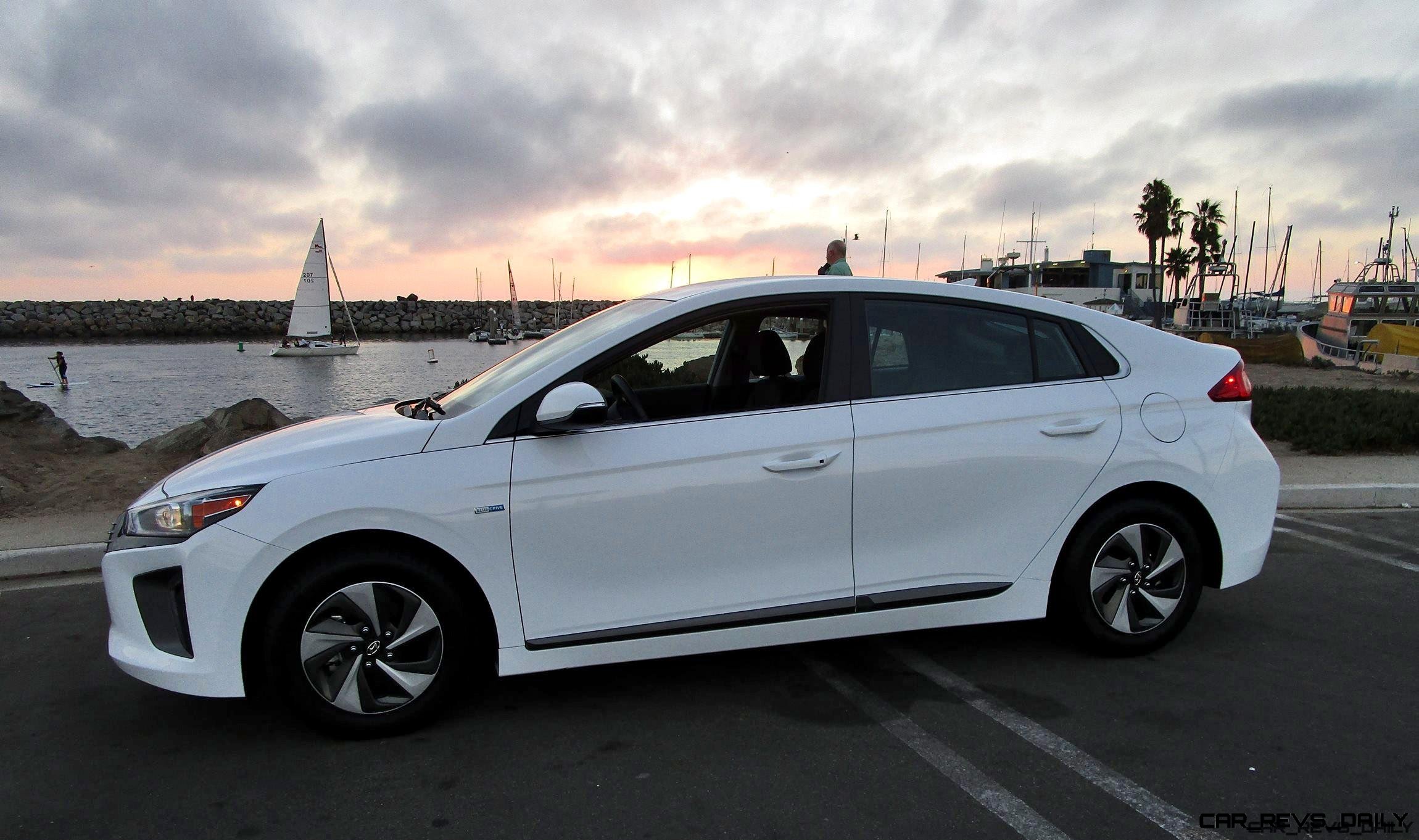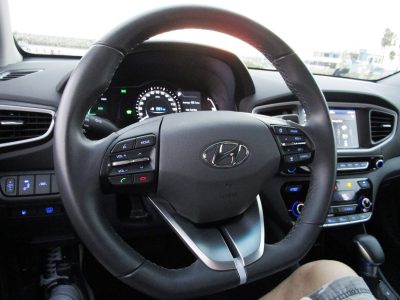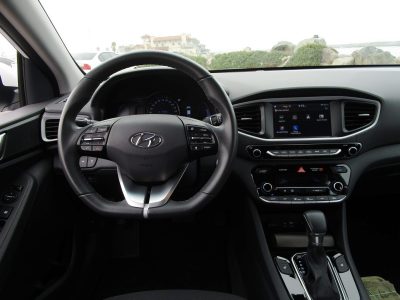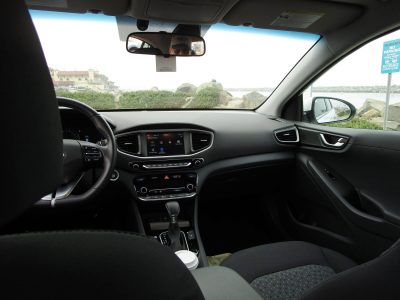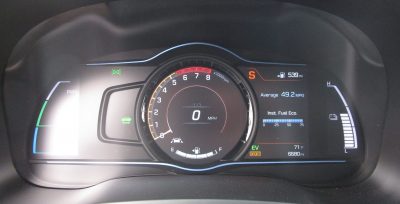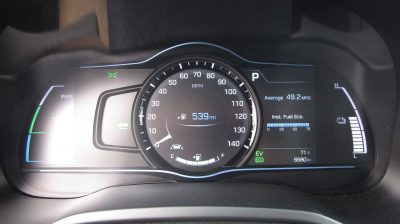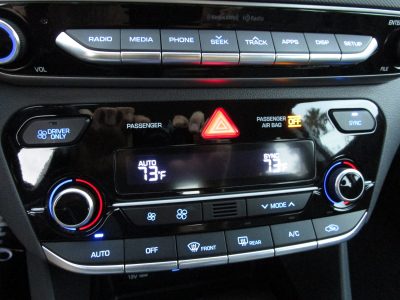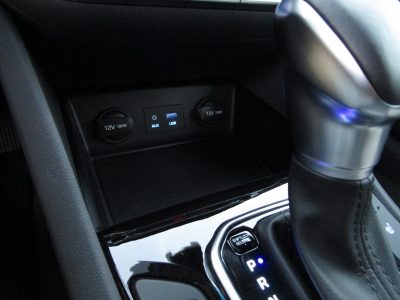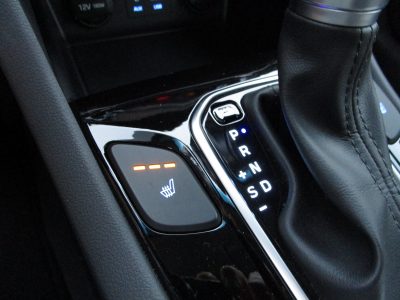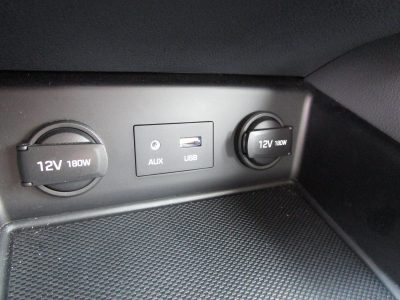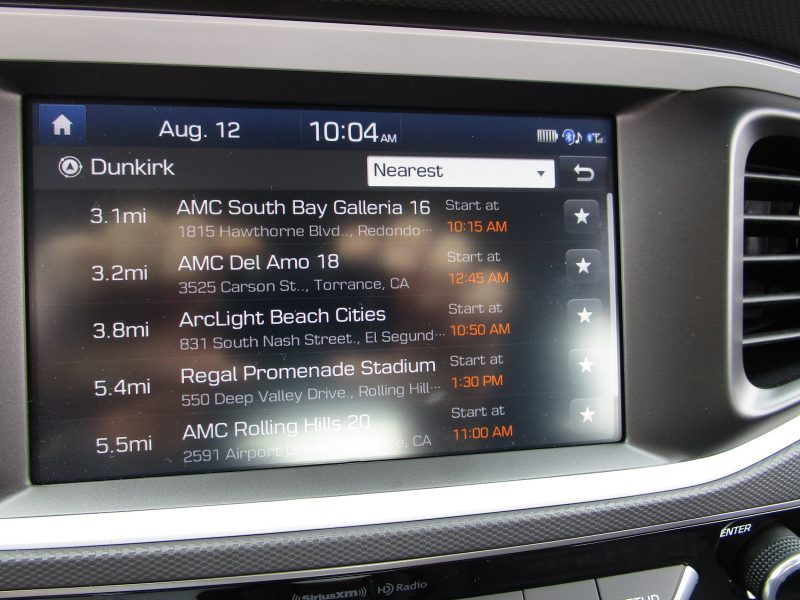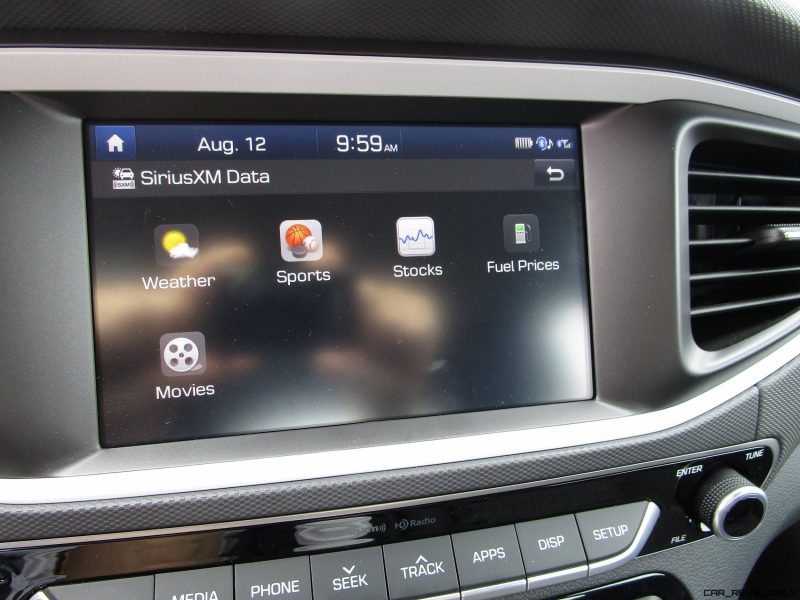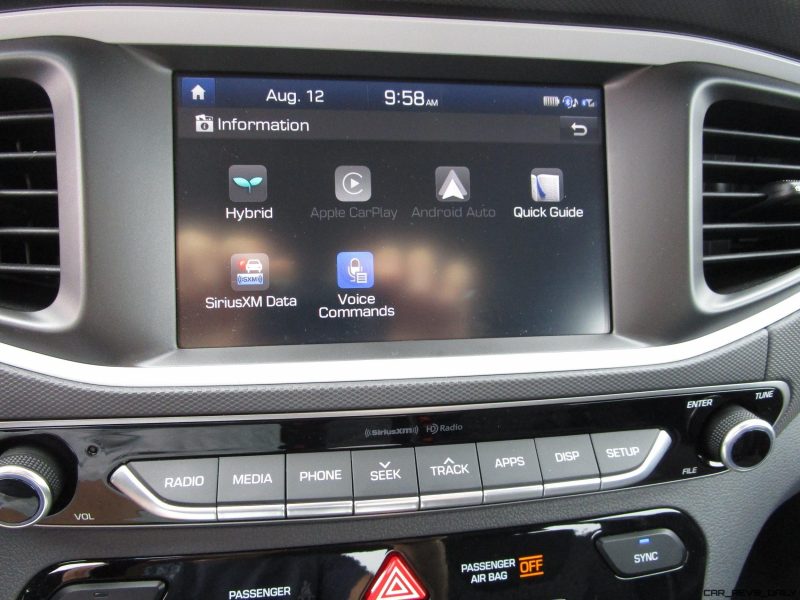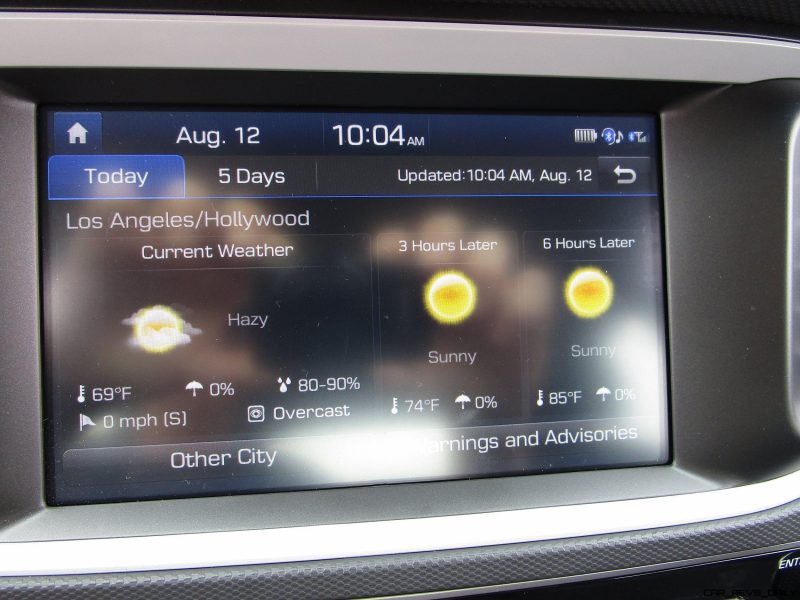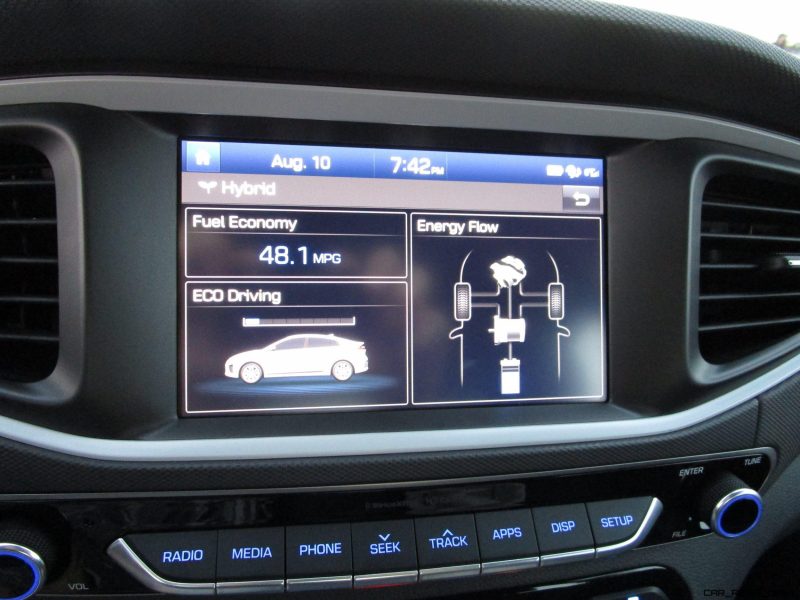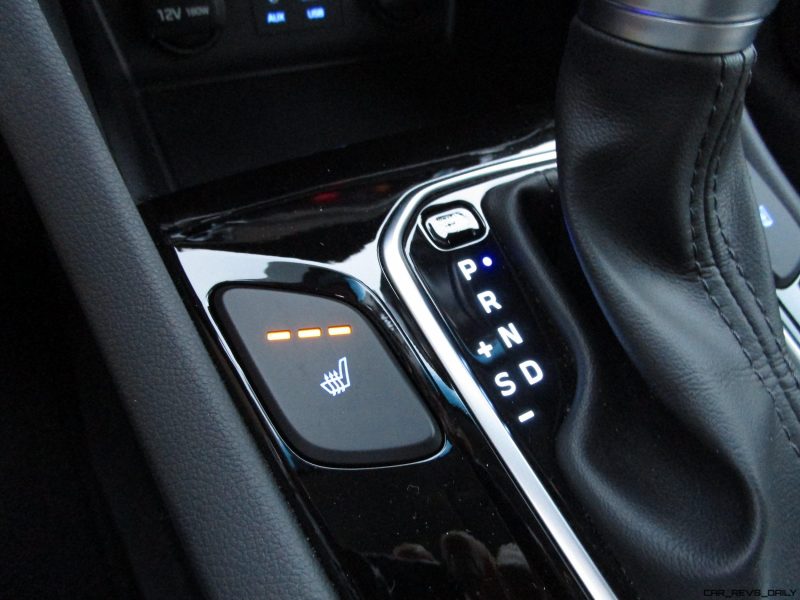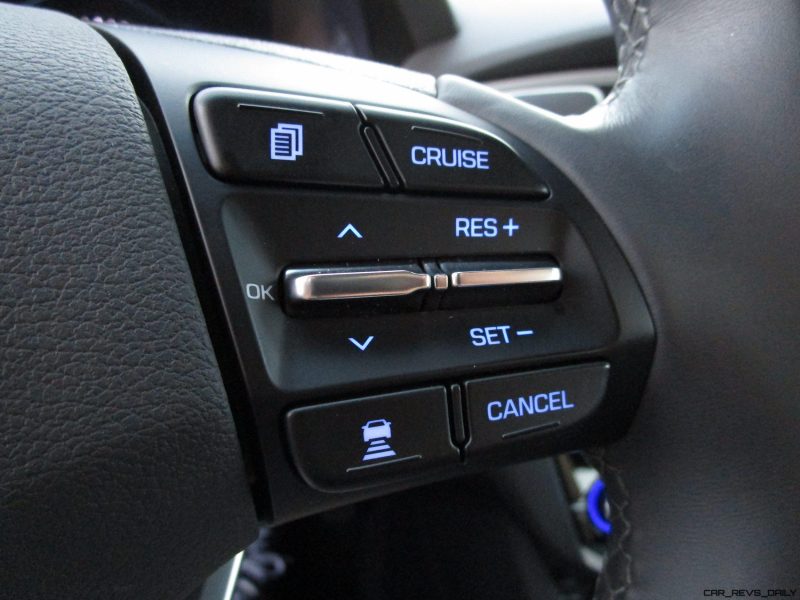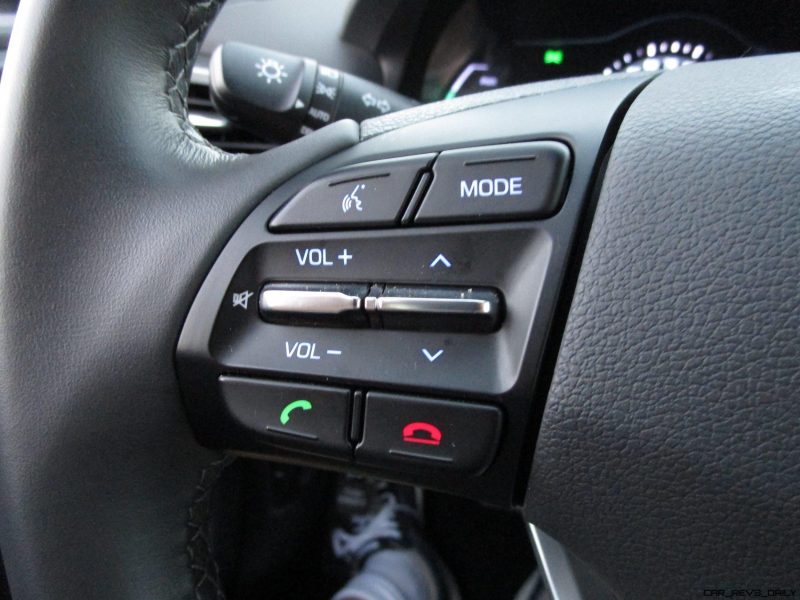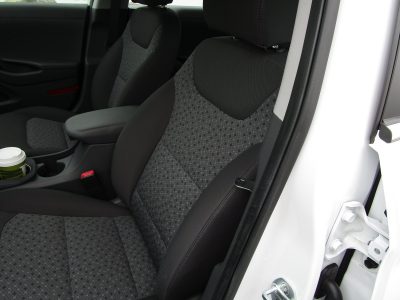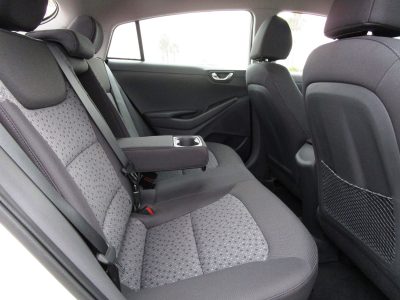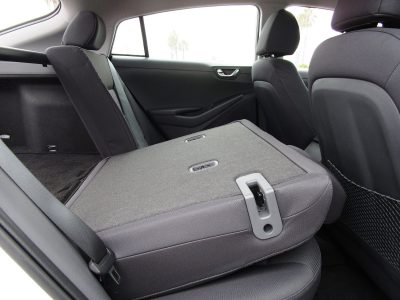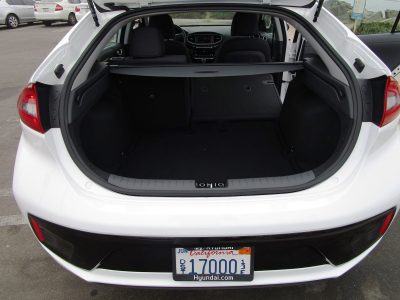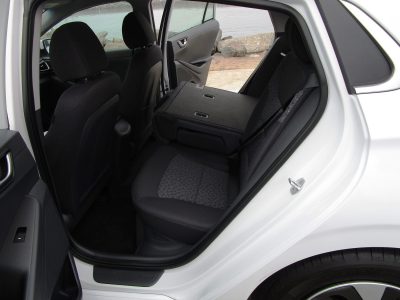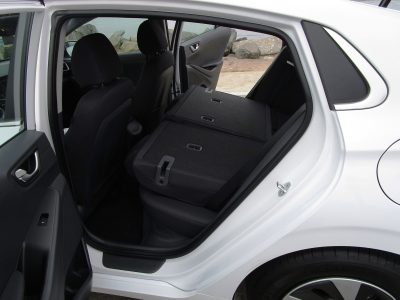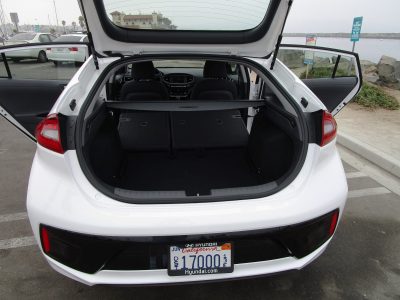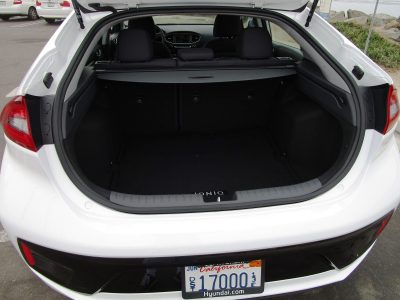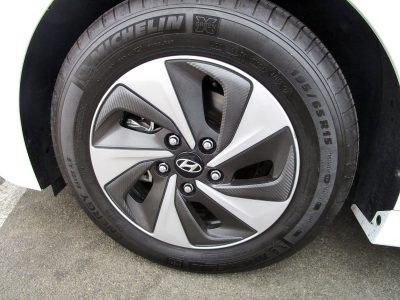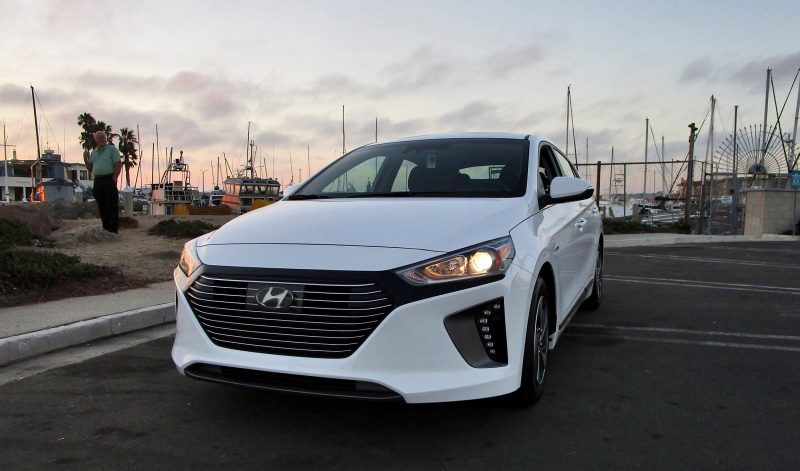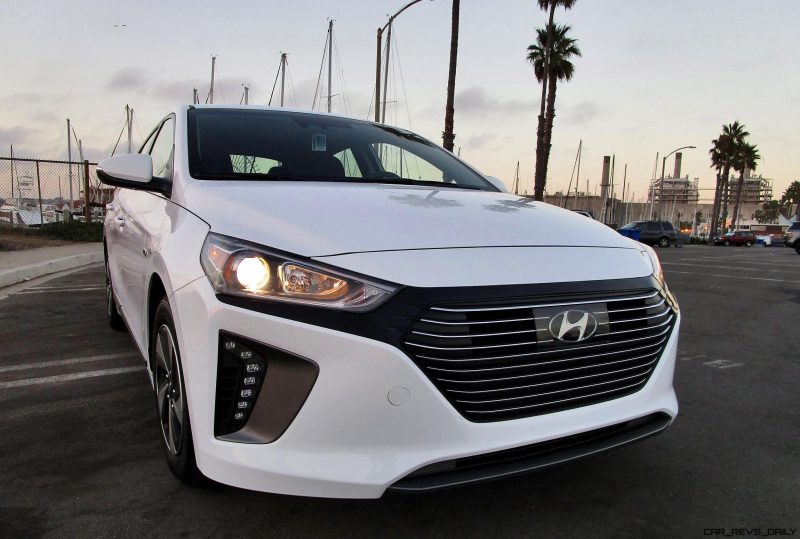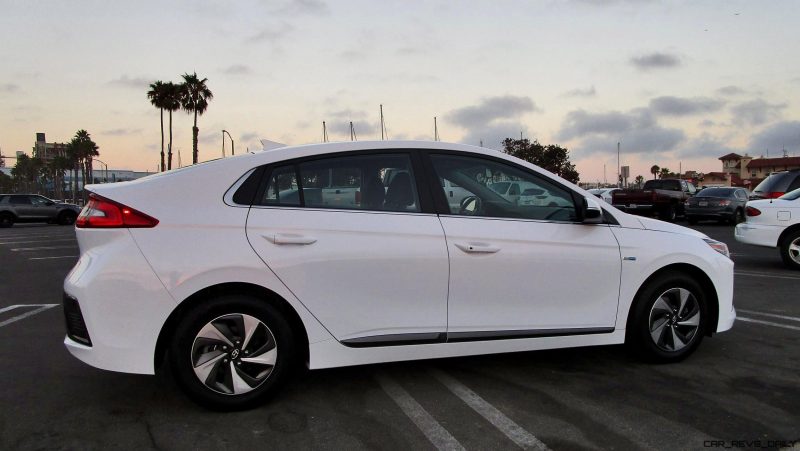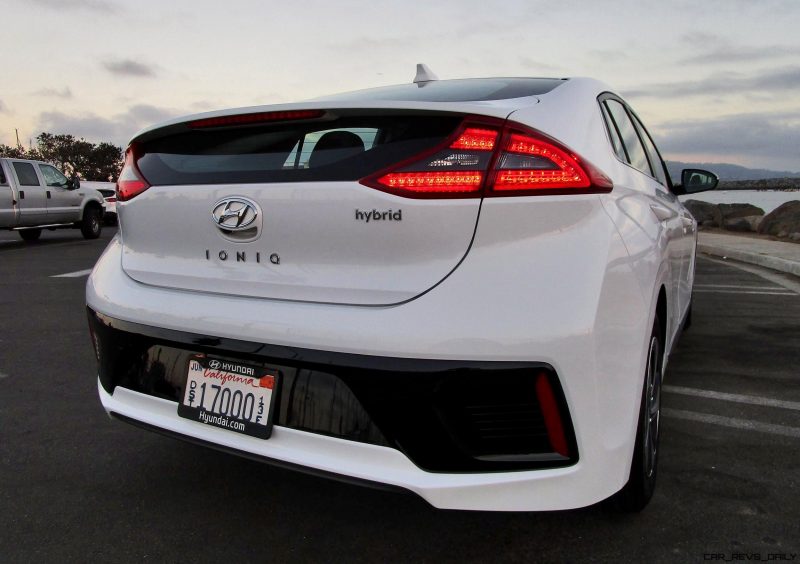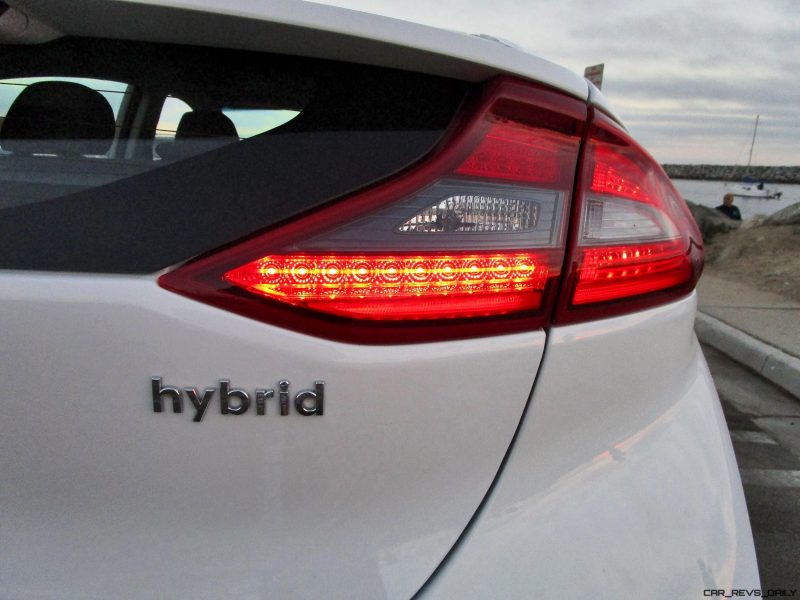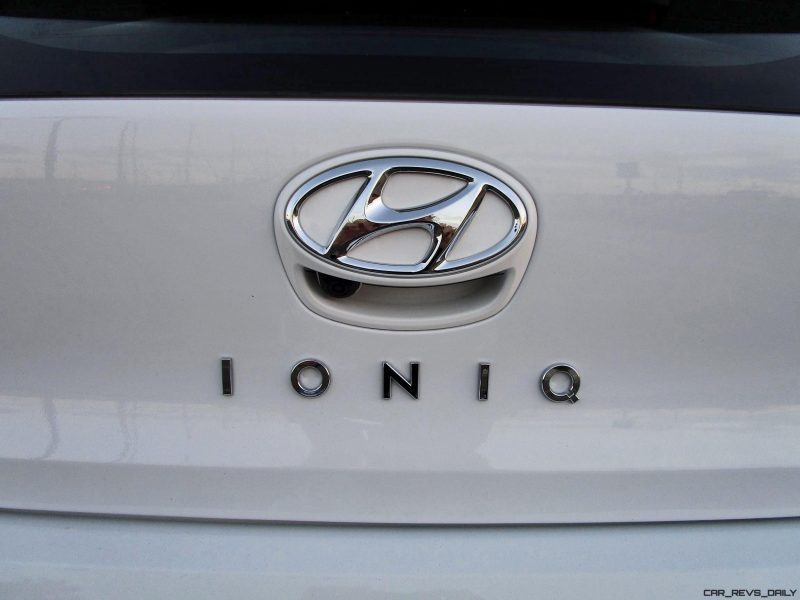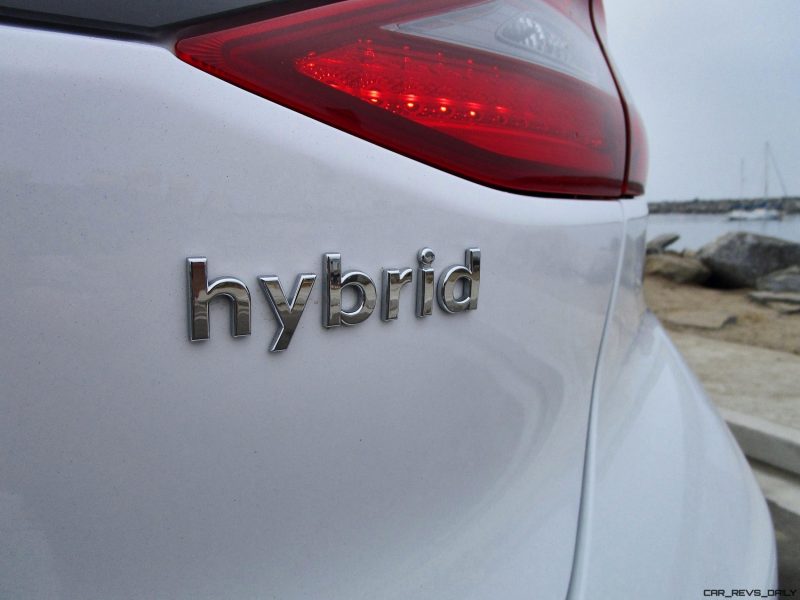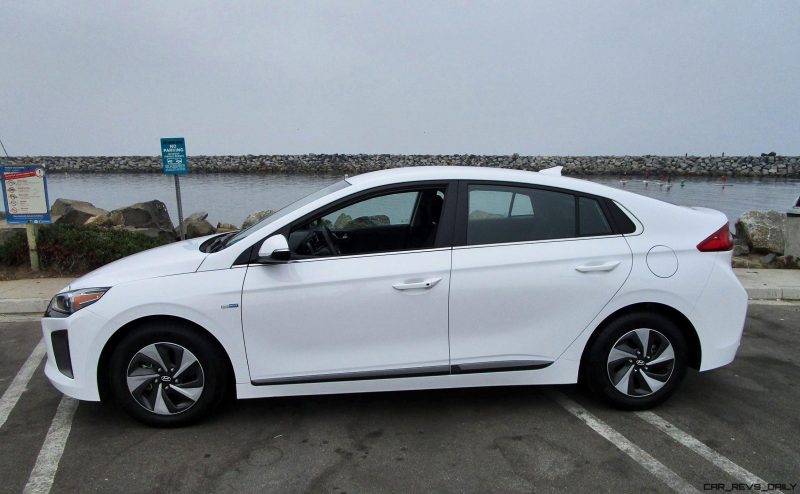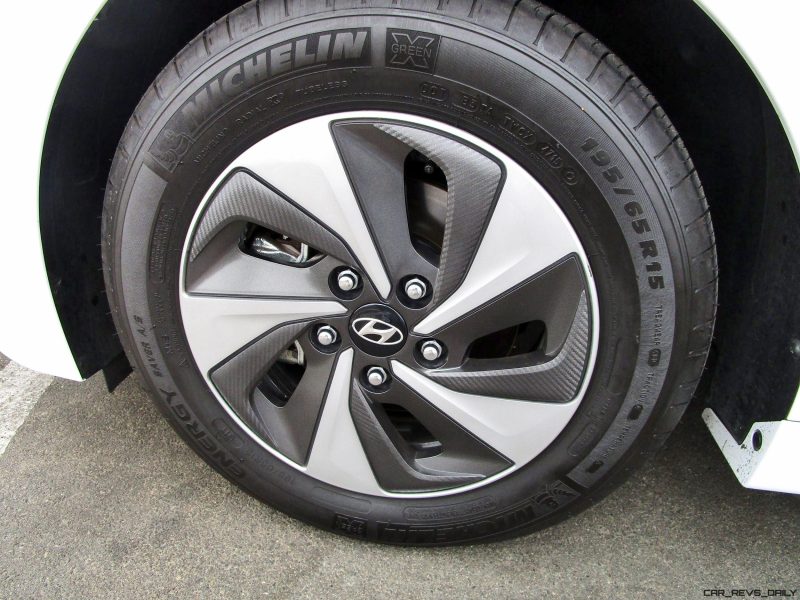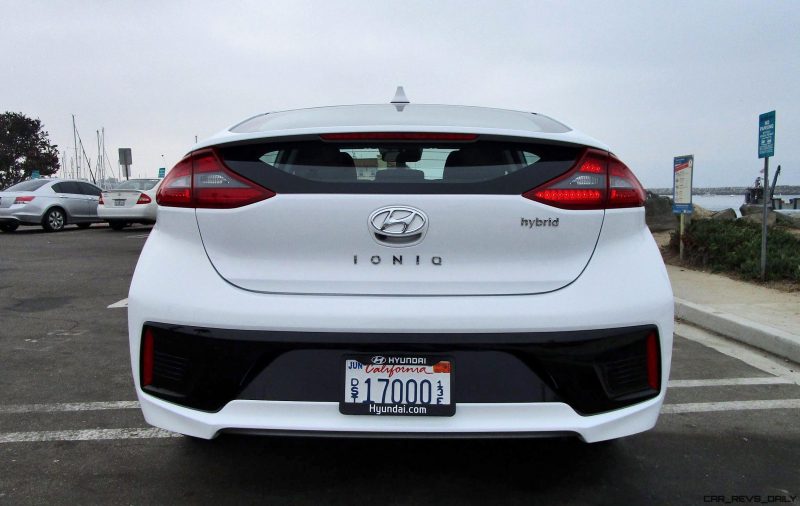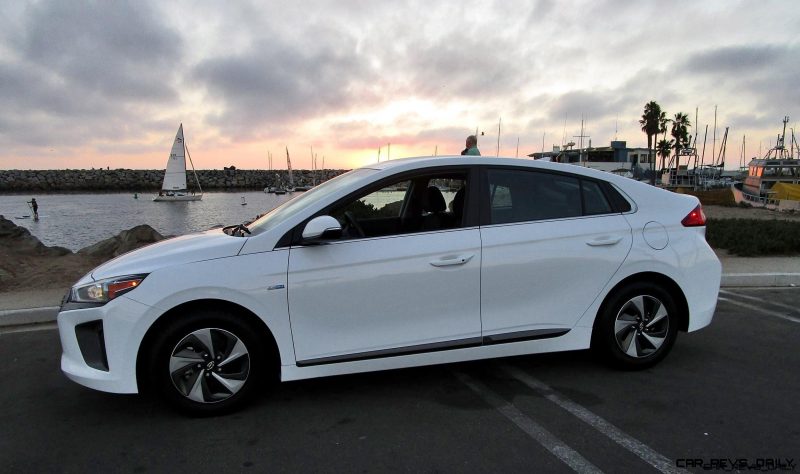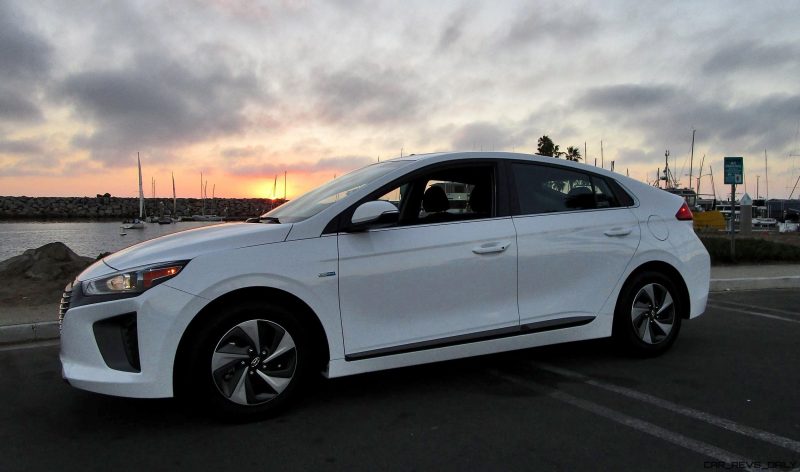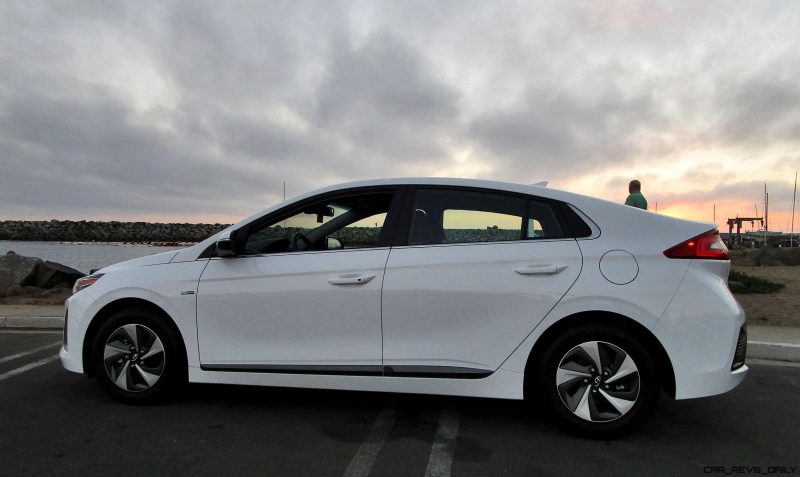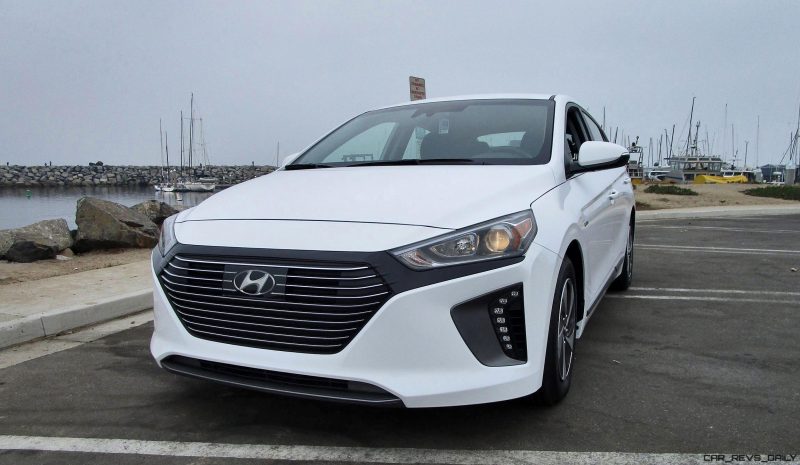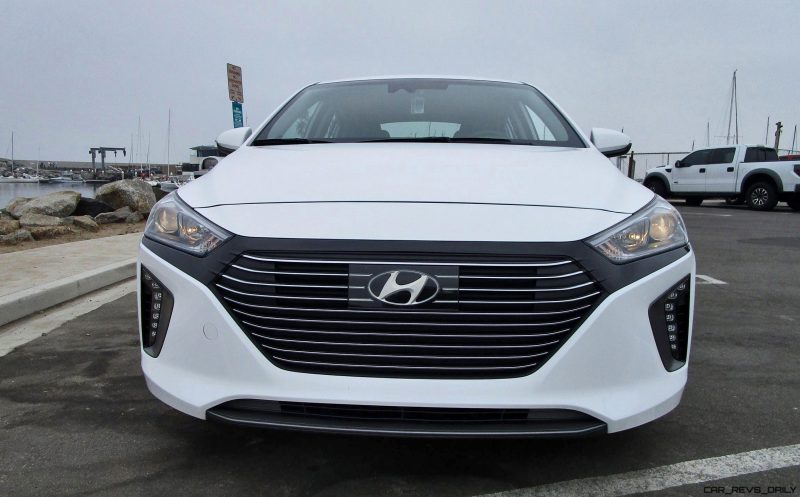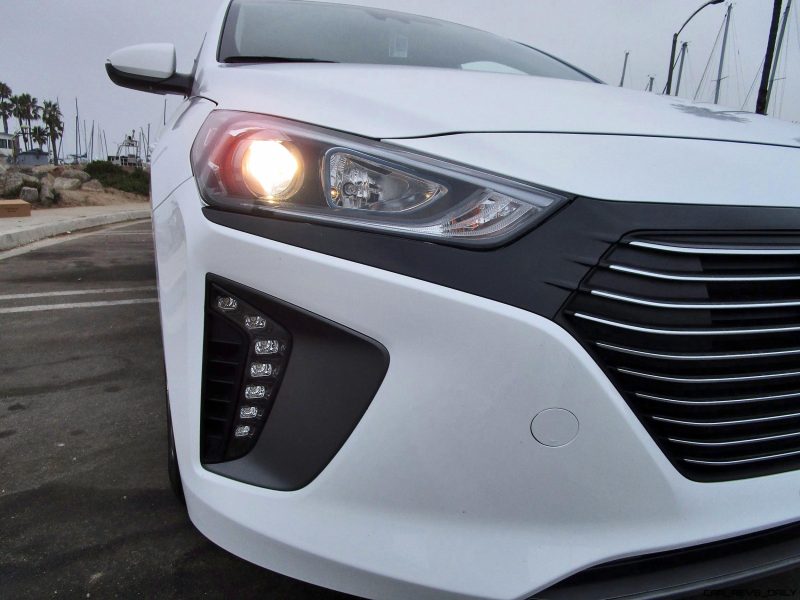These days a lot of automakers offer a hybrid of some sort. But pretty much the undisputed king is the Prius. And Toyota earned the reputation the hard way – putting out their necks first with a little agrarian car that earned more than its share of jibes and rude noises.
But Toyota’s laughing now.
Interestingly, there have been precious few direct competitors to the Prius.
But now we have a new fuel-sipping gunslinger in town –the all-new Hyundai Ioniq hybrid.
So, does it send the Prius packing, or is it more ironic than Ioniq?
Well it definitely has the Toyota in the crosshairs in the styling department – especially if you liked the previous generation’s looks. While the new Prius took a radical departure from the sensible shoe styling department, and really ramped up the futuristic looks – which you either love or hate – Hyundai went more conservative in their styling.
Which is not to say boring. The Ioniq looks similar to the Elantra, which is handsome, and the 5-door hatchback is a clean, modern design. Aerodynamics are a big part of getting excellent fuel economy, and Hyundai polished the hybrid’s lines to a class-leading 0.24 Cd. There’s stylish bits like a split rear window – Prius Prime has one as well – and like the Toyota, it looks cool, but actually makes seeing out the back challenging.
Our tester was the mid-level SEL, so it gets a little bling from LED daytime running lights and taillights, chrome beltline moldings, lower door moldings and mirrors with turn signal indicators. We would prefer the upscale Limited model’s handsome 17-inch alloy wheels – our tester’s wheel covers looked aero, but a bit low-rent.
Conservative, inside and out.
The interior echoes the exteriors simple tasteful lines. Unlike the Prius “car of the future” vibe, the Ioniq, is a low-key, friendly, and typical of Hyundai – well thought out and executed. You certainly feel well-looked after, even in our mid-grade tester, on top of the usual power goodies, we enjoyed a 7-inch center touch-screen, 7-inch TFT LCD instrument cluster display, Dual zone auto climate control, leather-wrapped steering wheel and shift knob, power driver seat with power lumbar support, heated front seats, Apple CarPlay and Android Auto.
The rear seats are exceptionally spacious, and the low-profile battery pack means the cargo area is impressively huge with rear seats up or down.
It’s a comfy place to be, with soft touch materials where you want them, and Hyundai adds to the feel-good factor, with clever eco-friendly materials; the door covers are made of plastic combined with powdered wood and volcanic stone. Raw materials extracted from sugar cane are partly applied on the headliner and, paint features renewable ingredients extracted from soybean oil.
Sounds delicious, but is the Ioniq tasty to drive?
It’s actually a very good drive – one that we prefer over the Prius. This isn’t a huge shock to us – the Ioniq shares much of its powertrain with the Kia Niro Hybrid that we tested recently and really enjoyed.
Under the hood is a 1.6-liter 4-cylinder gas engine that pumps out 104 hp and 109 lb-ft, which doesn’t sound particularly impressive, but it does have an amazing 40 percent thermal efficiency – it’s squeezing every last drop of power from the gasoline. An electric motor is hooked up to the transmission, and kicks in an additional 43 hp, giving a combined 139 hp and more importantly 195 lb-ft of torque. A lightweight 1.6kWh lithium-ion battery pack keeps the show on the road.
That’s good power, but the Ioniq takes a major step away from the Prius by employing a 6-speed dual-clutch automatic transmission instead of the slippy/sloppy CVT in the Toyota.
In regular driving the transmission is smooth and unobtrusive, and the Hybrid Hun glides off under EV power up to 20 mph or so, and is happy to switch into full EV mode when it can – even at highway speeds. Hyundai is proud to point out that the Ioniq is America’s most fuel-efficient car with EPA est of 59 mpg highway. There’s a caveat here – that’s only with the base model Blue trim.
Even in our “gas-hog” SEL tester, we averaged about 52 mpg.
That’s driving gently. Even when we drove aggressively, we were still around 48 mpg. Impressive.
Even more impressive is how much fun the driving is. Like the Kia Niro, you get a nice change in personality when you push the transmission over to sport mode. The instrument display changes from its mellow blue MPH display to a racy red tachometer with digital speedo in the center.
More importantly, the dual-clutch transmission gets with the program, the little 4-cylinder responds much more quickly to the throttle, loves to rev, and the added torque from the EV system gives you a healthy bottom end punch. There’s even a sporty engine note.
Handling is solid, but not so endearing as the powertrain – you don’t feel like you’re on roller skates, but you are conscious that these are wheels and tires designed to give you great fuel economy rather than sports-car blazing cornering. In all fairness, the Prius with its more advanced rear suspension, is the better handler.
The advantage goes back to the Ioniq on price. The Ioniq Blue – the most efficient model, starts at just $22,200. The Prius at $23,475. While both manufacturers offer a plug-in hybrid, only Hyundai is offering a full EV model as well.
Our SEL tester, which we liked for all the luxo goodies, as well as Blind Spot Monitoring and Rear Cross Traffic alert starts at $23,950. Our tester had the lone option, the Tech Package, which adds Automatic Emergency Braking, Smart Cruise Control and Lane Departure Warning. For $1,000 it’s money well spent. All totaled, that meant our nicely-equipped and fuel thrifty Ioniq priced out at $24,950.
If you want the luxo Limited model which includes leather, sunroof and 17-inch alloy wheels, it runs $27,500.
It’s tough to go direct comparison with Prius because of packaging. For example, all Prius models have their Safety Sense suite standard, but if you want Rear Cross Traffic Alert and Blind Spot Warning like our tester, you have to opt for the $29,135 Prius Four.
Ultimately, the new Ioniq is a convincing competitor to the Prius. If you want to feel like you’re in the latest high-tech transportation, the Toyota wins with its futuristic looks and interior.
But If you want your cake and eat it too, the Ioniq gives you outstanding fuel economy with a driving experience that even enthusiasts will find engaging – all wrapped up in a package that’s Hyundai friendly and familiar.
Lookout, Prius. There’s a new hybrid in town.
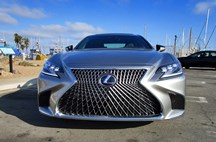
Ben Lewis grew up in Chicago, and after spending his formative years driving sideways in the winter – often intentionally – moved to sunny Southern California. He now enjoys sunny weather year-round — whether it is autocross driving, aerobatics, and learning to surf.

